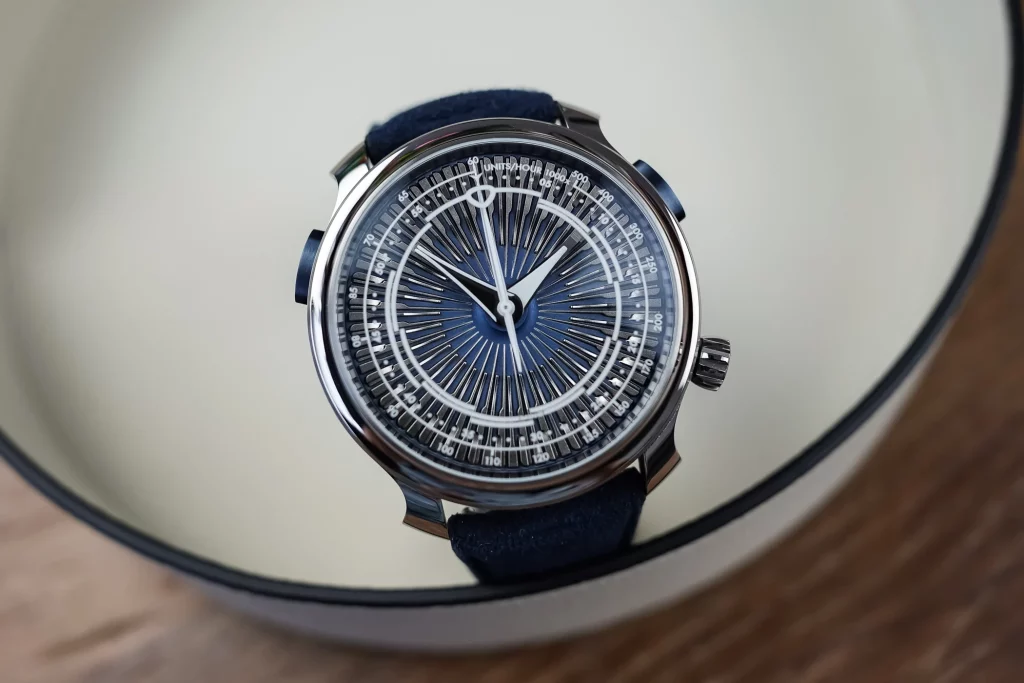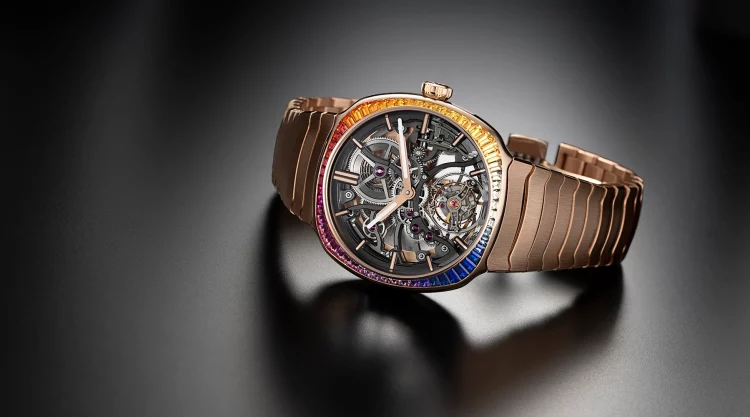In the ever-shifting landscape of high-end horology, few movements have sustained mythic status like Zenith’s El Primero. Born in 1969 and widely hailed as the world’s first fully integrated automatic chronograph caliber, El Primero redefined precision in an era that was just beginning to grapple with what “high-frequency” truly meant. Now, in 2025, amid a sea of silicon escapements, exotic materials, and algorithm-driven rate adjustments, the question remains: does the legendary El Primero still hold its edge, or has its crown finally passed to newer contenders?
To answer this, one must first revisit the history that made El Primero iconic. The original caliber 3019PHC was a marvel of mechanical architecture: a 5 Hz (36,000 vibrations per hour) movement with column wheel control, horizontal clutch, and an integrated construction at a time when modular chronographs still dominated. It could measure down to one-tenth of a second, offer 50 hours of power reserve, and maintain robust amplitude even when fully wound. It wasn’t just ahead of its time—it arguably created the template for the modern chronograph.
Over the decades, Zenith iterated on El Primero with restraint. While others pursued complete movement overhauls, Zenith preferred to refine the essential DNA. From the 400Z and the 405 “Flyback” to more recent skeletonized variants, the base frequency and architecture remained familiar. This consistency became both a strength and a limitation. Fans loved the continuity; critics questioned whether tradition had become a crutch.
But in 2025, after several quiet years, Zenith reentered the conversation with renewed focus. Rather than chasing gimmicks, the brand doubled down on craftsmanship, material innovation, and movement finishing. The newest El Primero variants, including the Chronomaster Sport II and Defy Skyline Chronograph, now feature updated silicon escape wheels, enhanced powertrain efficiency, and long-overdue modular servicing improvements—all while retaining the 36,000 vph frequency that defines its lineage.
The TAG Heuer TH20 Challenge
Yet while Zenith stayed true to its roots, competitors evolved aggressively. Chief among them: TAG Heuer. Once a fellow pioneer of automatic chronographs with its Calibre 11 (developed in parallel with Zenith’s El Primero), TAG has recently surged forward with its TH20 family of high-frequency in-house movements.
The TH20-08, launched in late 2024, stunned collectors and critics alike. Built from scratch with nanotechnology-regulated escapements and a hybrid magnetic balance, it promises ±1 second daily deviation—a standard once reserved for quartz chronometers. It beats at 5 Hz like El Primero, but adds features Zenith never offered: quickset date, anti-shock magnetism rating over 30,000 A/m, and an 80-hour power reserve. It also costs less to service due to modular bridges and open architecture.
On paper, the TH20 series may appear to outclass El Primero across the board. But specifications tell only part of the story. The tactile feedback of a column wheel pusher, the sharp vertical drop of a chronograph second hand, and the soul of a movement—these elements can’t be quantified in decimals or hertz.
The Wearer’s Perspective: El Primero in Real Life
Beyond tech specs and marketing duels, 2025’s user landscape provides a different lens through which to evaluate El Primero’s relevance. For enthusiasts and daily wearers alike, three metrics define a chronograph’s real-world value: accuracy, legibility, and tactile experience. Let’s explore each as it relates to El Primero today.
In terms of accuracy, recent independent testing has placed the latest El Primero variants within COSC-certified parameters (–2/+5 seconds per day), with beat error under 0.2 ms and amplitude above 290°. While not as obsessive as TAG’s TH20 quartz-matching stats, this is more than enough for collectors who value mechanical authenticity over microsecond bragging rights.

Legibility remains a strong suit for Zenith. The newest Chronomaster Sport II models offer a cleaner three-subdial layout with color contrast that subtly echoes the 1969 original. Lume application has also improved markedly—gone are the dim, vintage-tinted indices of previous decades, replaced by crisp, modern visibility in low-light environments.
Perhaps the most enduring strength of El Primero is its pushers. They require deliberate pressure—not stiff, not spongy, but weighted in a way that feels mechanical in the best possible sense. Start, stop, reset—each action clicks like a finely tuned typewriter. For purists, this is where Zenith continues to dominate. It’s not just a movement—it’s a moment, every time you use it.
Modern Challenges and Unresolved Quirks
That said, El Primero is not without its drawbacks. Despite recent improvements, servicing remains complex and costly. The compactness of its architecture—so revolutionary in 1969—makes for a tightly packed movement that’s unforgiving to amateur watchmakers. Spare parts, while available, often require direct support from Zenith, especially for the newer silicon-enhanced components.
Additionally, the power reserve remains a weak point. Even with incremental updates, the El Primero still hovers around 60 hours, which is outclassed by many modern high-beat calibers offering 70+ hours with twin barrels or low-friction designs. For collectors who rotate watches frequently, this shorter reserve can be an annoyance.
And finally, some models still lack hacking seconds—a feature now considered standard in this price tier. Zenith has rectified this in newer Defy series pieces, but some heritage-styled offerings cling to old specs in the name of tradition, frustrating modern buyers.
A Legacy Reclaimed—Or Retired?
So, does El Primero still hold its edge in 2025?
The answer is nuanced. In a purely technical sense, El Primero has been surpassed by newer calibers with futuristic escapements, longer reserves, and lower tolerances. If horology were a race of spreadsheets, the TH20 and even Citizen’s Caliber 0200 would take the gold.
But mechanical watchmaking has always thrived on something deeper: story, continuity, mechanical romance. And in this space, El Primero remains king. It is the original high-frequency heartbeat. It is a movement that survived the quartz crisis, a caliber that powered early Daytonas, a name that still evokes the golden age of analog timekeeping.
In 2025, El Primero is not the best because it is the newest. It is the best because it remains defiantly mechanical, proudly precise, and irreducibly real. It is still being worn—not because it’s perfect, but because it still matters.





































